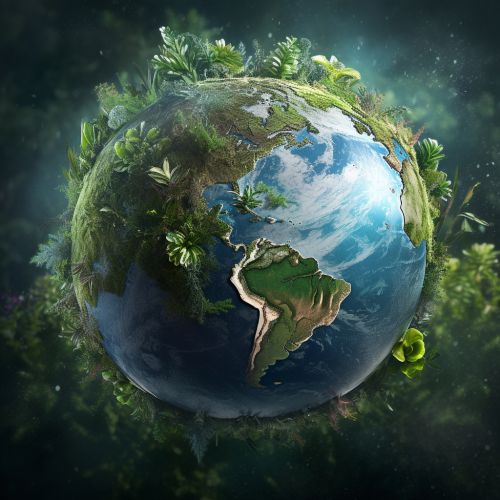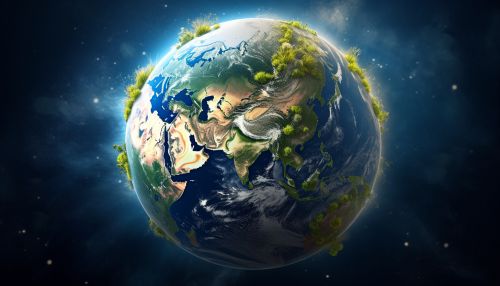Biogeochemical cycle
Introduction
A biogeochemical cycle refers to the pathway through which chemical substances circulate through biosphere, lithosphere, atmosphere, and hydrosphere. These cycles are essential for life on Earth as they regulate the environment, making it habitable for various forms of life.


Types of Biogeochemical Cycles
Biogeochemical cycles can be broadly divided into two categories: gaseous and sedimentary.
Gaseous Cycles
Gaseous cycles primarily involve the atmosphere and include the carbon, nitrogen, and oxygen cycles.
Carbon Cycle
The carbon cycle is a series of processes through which carbon compounds are recycled in the ecosystem. It includes processes such as photosynthesis, respiration, decomposition, and combustion.
Nitrogen Cycle
The nitrogen cycle involves the transformation of nitrogen from its inert atmospheric form into a form that can be used by living organisms and then back into the atmosphere.
Oxygen Cycle
The oxygen cycle involves the movement of oxygen within its three main reservoirs: the atmosphere, the biosphere, and the Earth's crust.
Sedimentary Cycles
Sedimentary cycles primarily involve the lithosphere and include the phosphorus, sulfur, and rock cycles.
Phosphorus Cycle
The phosphorus cycle is the process by which phosphorus moves through the lithosphere, hydrosphere, and biosphere.
Sulfur Cycle
The sulfur cycle is the collection of processes by which sulfur moves to and from minerals and biological systems.
Rock Cycle
The rock cycle is a basic concept in geology that describes the time-consuming transitions through geologic time among the three main rock types: sedimentary, metamorphic, and igneous.
Importance of Biogeochemical Cycles
Biogeochemical cycles are crucial for life on Earth as they regulate the concentration of essential elements in the environment. They ensure the recycling of nutrients, maintaining their balance in the environment.
Human Impact on Biogeochemical Cycles
Human activities have significantly altered biogeochemical cycles. For instance, the burning of fossil fuels has increased the concentration of carbon dioxide in the atmosphere, disrupting the carbon cycle and contributing to global warming.
Conclusion
Understanding biogeochemical cycles is essential for comprehending how life on Earth is sustained and how human activities can disrupt these cycles, leading to environmental problems like climate change.
